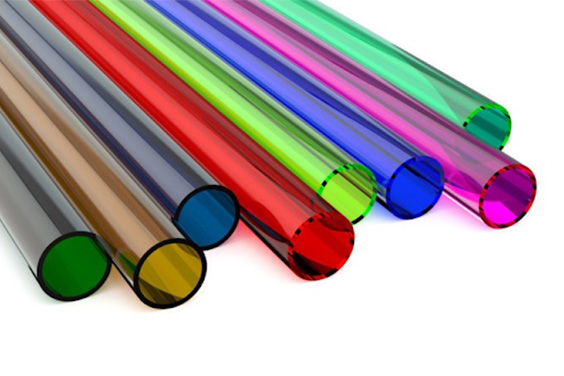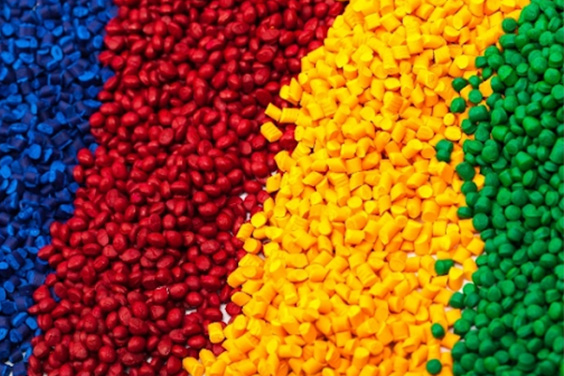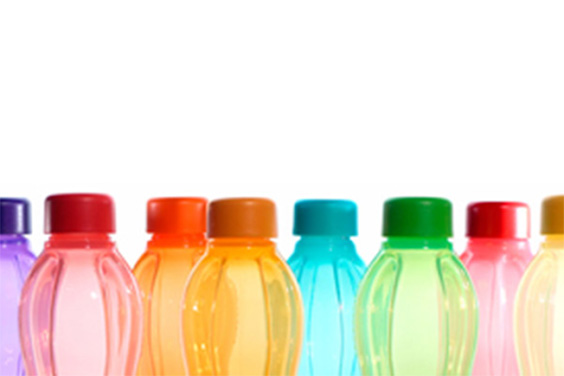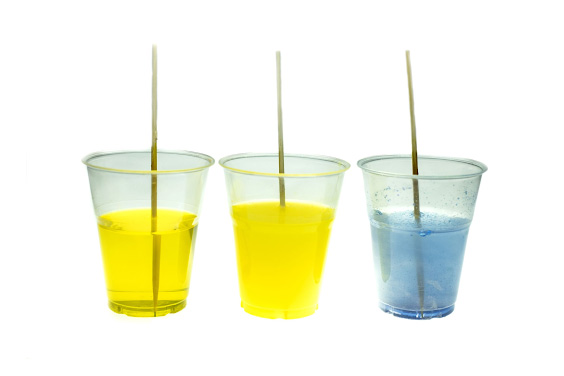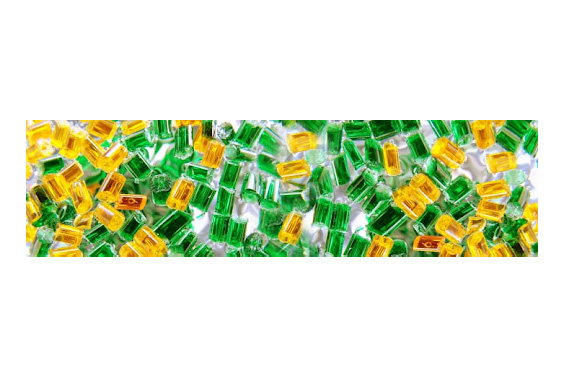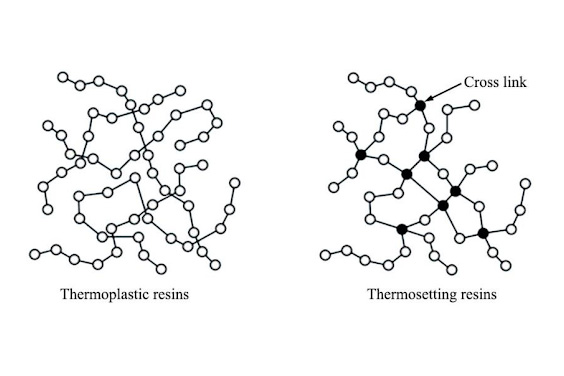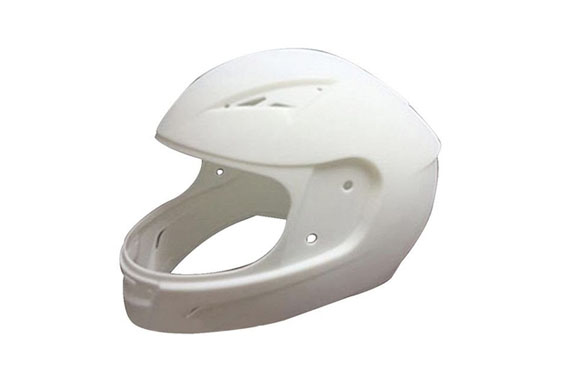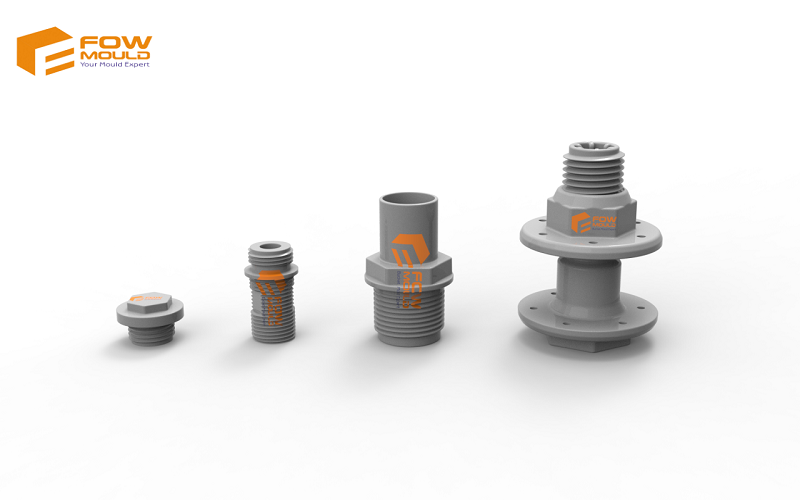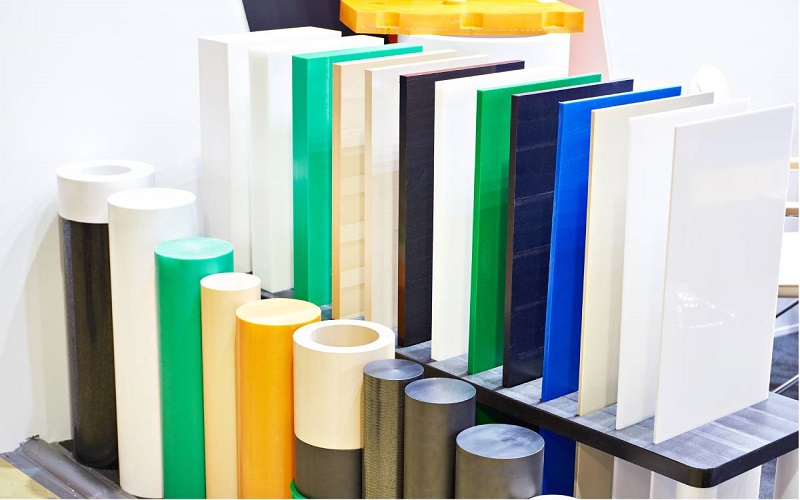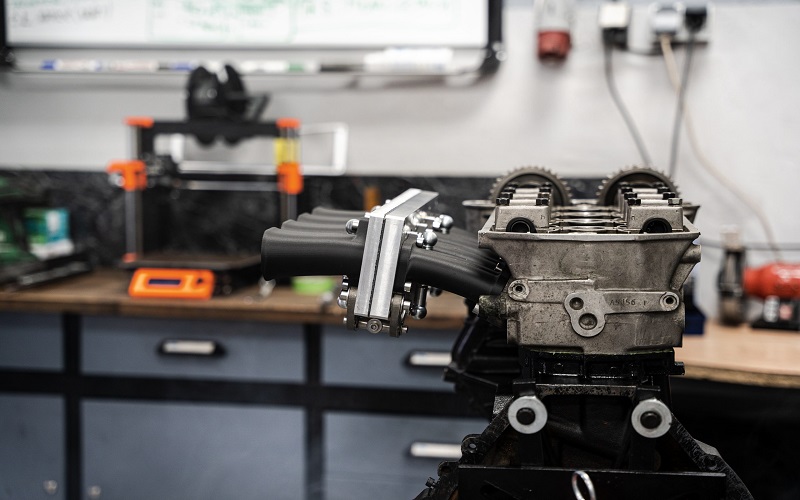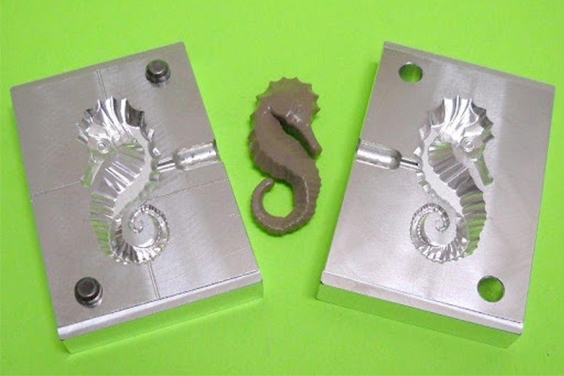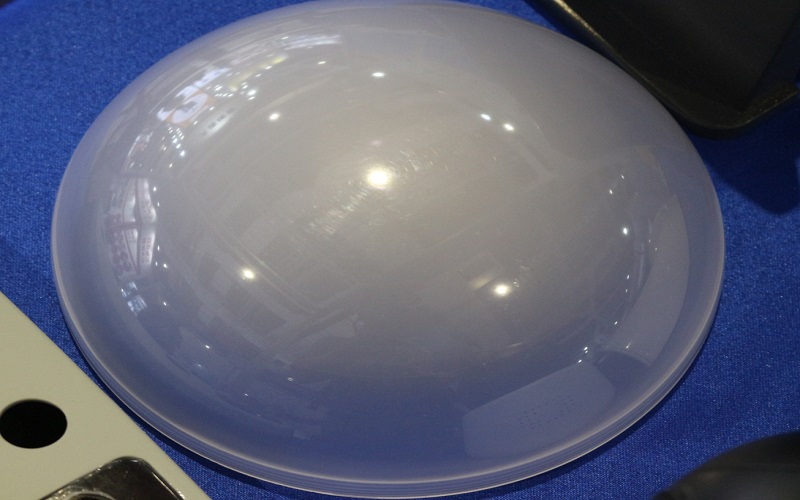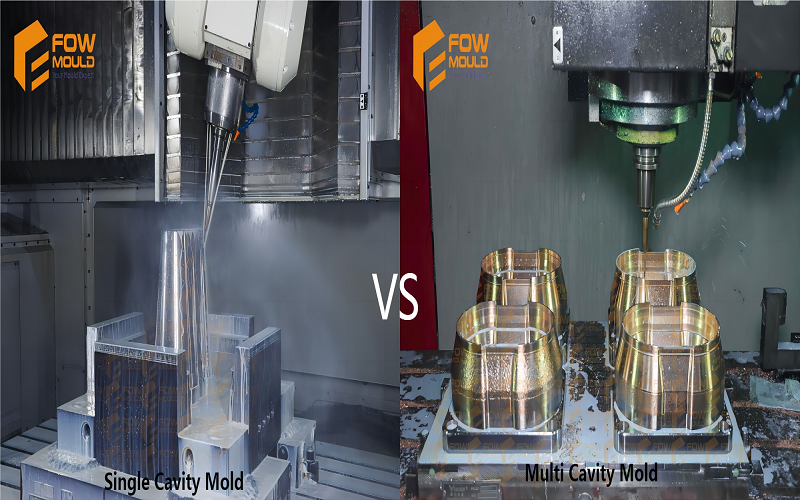
Difference Between Thermoplastic and Thermosetting Plastic
- Home
- > Blog
Share :
Share :
From plastic bags, toy molds, plastic bottles to automobile parts, durable manufactured plastic goods; all of these things that we see around ourselves are either made up of thermoplastics or thermosetting plastics. One of the most significant differences between thermoplastic materials and thermosetting plastic materials is that thermoplastics have the property to be remodeled while thermosetting plastics stay in their solid-state after they are hardened.
These two are two different polymers that serve different purposes. They have different molecular bonds and react differently to heat. In this article, we will talk about the features of these two polymers, their advantages and disadvantages and discuss the differentiating features between them.
What Are Thermoplastics?
Thermoplastic is a polymer that can be melted and then recast. In simple terms, it is a kind of plastic which is made of polymer resins. They tend to become very soft when heated and become quite hard when cooled down. A plastic toy mold made out of it is highly durable.
Thermoplastics can be recycled very easily. They don’t show any changes in their chemical properties when they are heated or cooled several times. However, when they are heated, their physical property changes; they take the form of a homogenized liquid that can be resized and reshaped.
Thermoplastics can be heated, reshaped, resized, and cooled several times. Polyethene, polypropylene, polyvinyl chloride, polycarbonate, and polyethylene terephthalate are some of the most common types of thermoplastics.
Features of Thermoplastics
Thermoplastics have a simple molecular structure that consists of chemically independent macromolecules. When heated, these thermoplastics are melted, shaped, and then resized or reshaped. They solidify when they are cooled down and can be used to make lego injection molding. Since thermoplastics can be melted and solidified multiple times, they can be easily recycled. Here are some of the characteristics of thermoplastics:
- They can be reshaped and resized
- They generally have a high molecular weight
- The intermolecular force becomes weak when the temperature increases
- They can be recycled
- They are light in weight and also have high strength polymers
- They are flame retardants
- They are different from thermosetting polymers since thermosetting polymers don’t melt upon heating
Advantages of Thermoplastics
- Many materials made of thermoplastics fracture instead of deforming when exposed to high-stress conditions. One of the most significant disadvantages of replacing thermoplastics with metals is that thermoplastics can quickly melt, especially low-quality thermoplastics.
- They are more expensive as compared to thermoset materials. They have a low resistance to organic and polar solvents.
- They are very energy efficient when it comes to manufacturing and processing of several materials such as a toy prototype. Materials from thermoplastics can be easily made in high volume at low cost and with high precision.
- They are also very lightweight, which makes them a great alternative to metals. Besides, generally, thermoplastics have better properties when compared to metals since they can handle more considerable deflections without deforming them.
- They can be reshaped or resized without impacting the chemical properties of the material. They can quickly soften upon heating, and they can even become fluid when further heat is applied. In addition, the curing process is 100% reversible.
- Materials made of thermoplastics have performance benefits as well. These materials have high strength, can be bent easily, and have shrink resistance properties. Thermoplastics find application in producing plastic bags.
- They have high strength and are lightweight. Besides, they have low processing as well as manufacturing costs. It is because of these advantages that thermoplastics are gaining a lot of popularity.
Disadvantages of Thermoplastics
- Many materials made of thermoplastics fracture instead of deforming when exposed to high-stress conditions. One of the most significant disadvantages of replacing thermoplastics with metals is that thermoplastics can quickly melt, especially low-quality thermoplastics.
- They are more expensive as compared to thermoset materials. They have a low resistance to organic and polar solvents.
Application of Thermoplastics
Owing to its multiple advantages, thermoplastics have gained a lot of popularity in recent times. We may not realize this, but we are all surrounded by thermoplastic materials. All of these materials are examples of thermoplastic materials from packaging film, plastic bottles, action figure molds to PVC tubes.
Thermoplastics are widely used in commercial as well as industrial applications. One of the most common mechanical applications is POM. These days PEEK (polyether ether ketone) plastics are also used widely because of their high performance.
Polycarbonate is a type of thermoplastic and is used to make several items such as:
- Drinking bottles
- DVDs and CDs
- Containers for food storage
- Eyeglass lenses
Acrylonitrile butadiene styrene or ABS is used to make:
- Toys made using lego injection
- Sports equipment
- Automobile parts
Polyethene is one of the most common types of thermoplastics which is used for making several items, including:
- Bulletproof jackets
- Shampoo bottles
- Plastic bags
What are Thermoset Plastics?
Thermoset plastics, also known as thermoset composites, strengthen when heated; however, they cannot be reheated or remodeled after molding. Once the thermoset plastics are molded to make materials such as an action figure mold, they offer protection against corrosion, high operating temperatures, and chemical resistance.
Since thermoset plastic provides such protection, it can be used in several challenging as well as aggressive environments. Phenolic Molding Compound and Bulk molding compound or BMC are some of the examples of thermoset molding materials.
Properties of Thermosetting Plastics
One of the essential characteristics of thermosetting plastics is their cross-linked molecular structure.This feature comes handy during toy mold making. It is because of cross-linked structures that the products made from thermosetting materials have large macromolecules.
Such a structure is also responsible for providing breakage resistance and high strength. Here are some of the features of thermosetting plastics:
- Since they lose their elasticity when heated, they generally become brittle.
- They are heat resistant. However, when high heat is applied, they decompose even before reaching their melting point.
- They can’t be reshaped or remolded once they are cured or molded.
- They are resistant to chemical attacks.
- The density of thermosetting plastics depends upon the constituent components which are used to make polymers.
Advantages of Thermosetting Plastics
- Thermosetting plastics' most significant advantages are their chemical resistance feature, structural integrity, and heat resistance. All of these properties enhance the mechanical property of the material. Thermoset plastics are widely used in sealed products because of their deformation resistance.
- Thermosetting plastics also have high-temperature resistance as compared to thermoplastics. Thermoset plastics also have a flexible design and aesthetic appearance. They are cost-effective as well as have high levels of dimensional stability.
- Thermosets form chemical bonds or links between chains during curing or polymerization and create a three-dimensional or 3D network that is more rigid than thermoplastics' two-dimensional or linear structure.
- The 3D structure of the thermosetting plastics does not allow the interlinked chains to move freely when the material is subjected to heat. The thermoset plastics are set into a rigid shape and are generally brittle.
- Some of the thermosets with low cross-link densities can easily be softened when subjected to heat; however, they will not melt like thermoplastics.
- Thermoset plastics are widely used in packaging materials and circuit boards. Thermosetting plastics are generally preferred in the case of wet paste applications because they possess less solvent content.
Disadvantages of Thermosetting Plastics
- They cannot be recycled. They cannot be reshaped or resized. Once the plastic toy mold is done, their shape cannot be changed. They cannot be melted and reshaped like thermoplastics.
Applications of Thermosetting Plastics
Thermosetting plastics have high chemical resistance, heat resistance, and structure, so they are used widely. Thermosetting plastics are an attractive alternative to metal because of their properties. Geometrically complex shapes that cannot be produced using metals can be easily made with thermosets.
Because of their outstanding properties, thermosetting plastics are widely used in several industries, including electrical, manufacturing, durable manufactured goods industries, and even the aerospace industry. Some of the most common applications of thermosetting plastics are heat shields, furniture molding, cell tower tops, insulators, circuit breakers, auto molds, feeding troughs, disc brake pistons, etc.
There are several benefits of using thermosetting plastics because they are strong, lightweight as well as flexible. Here are some types of thermosetting plastics along with their uses:
- Phenol formaldehyde: it is used for electric fittings of dark colors, home appliance accessories, bottle tops, kettle handles, and saucepan handles.
- Melamine formaldehyde: they are used for electric insulation, tableware, and laminating the work surfaces.
- Epoxy resin: they are used for encapsulation, casting, and as adhesives. They are also used for coating the surface.
- Urea-formaldehyde: it is used in electrical fittings, handles, and control knobs.
- Polyester resin: it is used for casting and encapsulation.
Difference Between Thermoplastics and Thermosetting Plastics
Thermoplastics and thermosetting plastics are two different kinds of polymers. They are different in terms of their behavior when they are subjected to heat. Thermoplastic materials, therefore, have lower melting points, whereas thermosetting plastic materials can be used to make toy prototype maker, and can bear high temperatures.
Thermoplastic plastics | Thermosetting plastics |
1) These polymers are generally formed by the process of addition polymerisation. | 1) These polymers are generally formed by the process of condensation polymerisation. |
2) They are long chain polymers that are slightly branched or linear. | 2) They are heavily branched or cross linked in nature. |
3) It softens upon eating and hardens upon cooling. | 3) It does not soften upon heating. |
4) Molecules held together by Van der Waal forces of attraction. | 4) Molecules are held together by hydrogen bonds. |
5) They are soft, less brittle and quite weak by nature. | 5) By nature, they are hard, comparatively more bitter and hard. |
Table of Contents
Conclusion
Both thermoplastics and thermosetting plastics have advantages and disadvantages of their own. Today, we are surrounded by both thermoplastics as well as thermosetting plastic materials. These materials are used for manufacturing a product depending on the usage of the product and the purpose it will serve.
Materials such as molded plastic chair, plastic handles of saucepan require high heat resistance. Thus, it is made of thermosetting plastics. Despite the significant differences, both are widely used in today’s world because of their unique properties. You can choose to work with any one of these materials that suits your requirements and fits your budget.

